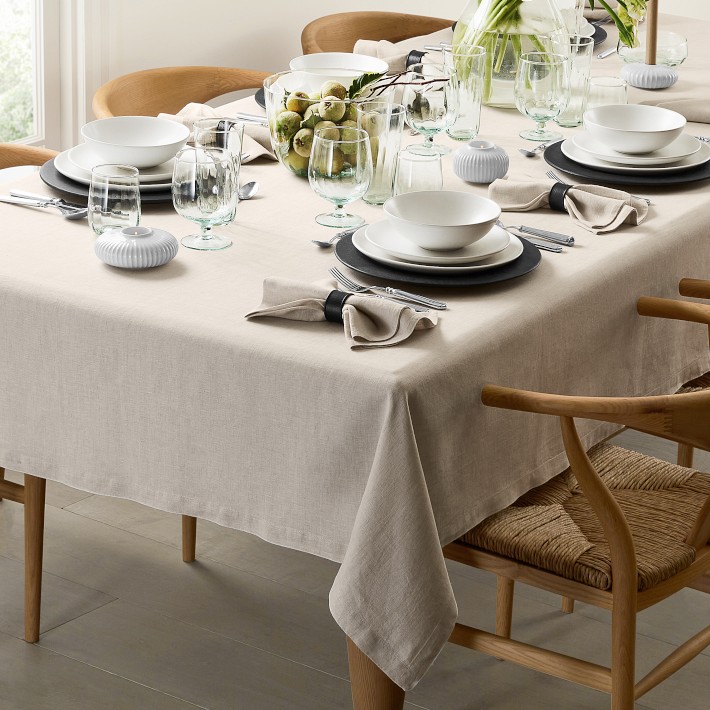Bed Linen Material Innovations: Checking Out Modern Trends and Creative Applications in Style and Fabric Sector
From lasting manufacturing techniques to innovative weaving modern technologies, the advancement of bed linen is improving the landscape of the fabric sector. As we dig right into the realms of innovative design applications and the emergence of linen blends and hybrid textiles, a new phase unfolds in which bed linen's duty in future fabric technologies takes center stage.
Lasting Practices in Bed Linen Production
Sustainable practices in bed linen production have actually come to be significantly vital in the textile industry's initiatives to reduce environmental influence and promote moral sourcing approaches. Linen, a natural fiber stemmed from the flax plant, supplies a series of benefits such as sturdiness, breathability, and biodegradability. However, typical techniques of linen production can involve substantial water consumption, chemical use, and energy-intensive procedures.
To address these challenges, several textile suppliers are adopting lasting techniques throughout the linen manufacturing procedure. This consists of sourcing flax from organic farms that stay clear of dangerous chemicals and chemicals, executing water-efficient retting strategies to extract fibers from the flax stalks, and utilizing environmentally friendly dyes and coatings. Additionally, some companies are spending in eco-friendly energy resources to power their manufacturing facilities and reducing waste via recycling and upcycling initiatives.
Technical Developments in Bed Linen Weaving
With the expanding emphasis on lasting techniques in bed linen manufacturing, the textile market is currently witnessing a surge in technical advancements particularly targeted at revolutionizing the art of linen weaving. These advancements are improving the means bed linen fabrics are produced, providing enhanced effectiveness, high quality, and imagination in weaving strategies.
Among the vital technical advancements in linen weaving is the integration of digital looms. These innovative looms are geared up with software program that enables intricate and complex designs to be woven with accuracy. By digitizing the weaving process, suppliers can attain better uniformity and accuracy in their bed linen fabrics.
In addition, innovations in thread spinning innovation have enabled the manufacturing of finer and even more long lasting linen yarns - table cloths. This results in softer and smoother bed linen textiles that preserve their high quality also after numerous usages and laundries
Furthermore, the advancement of eco-friendly dyeing processes and finishes for linen fabrics is gaining traction. These sustainable practices not just lower the ecological effect however also cater to the increasing customer need for morally generated fabrics.
Creative Style Applications for Linen
Ingenious imaginative techniques are increasingly shaping the imaginative style applications for bed linen in the textile sector. Bed linen's natural visual charm and capacity to mix with other fabrics make it a favored choice for producing one-of-a-kind garments and accessories that provide to the ecologically mindful customer.
Moreover, designers are explore bed linen in home decor, utilizing its durable and breathable nature to craft elegant furnishings such as curtains, bed linen, and furniture. The structure and drape of bed linen bring a feeling of sophistication and comfort to indoor rooms, adding a touch of elegance to contemporary homes.

Linen Blends and Crossbreed Fabrics

Crossbreed textiles, on the various other hand, take the concept of mixing an action even more by incorporating additional elements such as metal threads, recycled materials, or conductive fibers. These innovative textiles not just broaden the style possibilities yet likewise introduce useful elements like conductivity, antimicrobial homes, or enhanced durability. Crossbreed fabrics are significantly being used in numerous markets, including style, interior decoration, and technological textiles, where the need for multifunctional materials gets on the increase.
Linen's Duty in Future Fabric Innovations

In the realm of future textile advancements, linen is expected to be a principal in the development of sophisticated useful fabrics. Researchers and developers are discovering ways to improve bed linen's fundamental qualities through technological innovations, such as incorporating clever textiles, nanotechnology, and efficiency finishes. These technologies aim to raise bed linen's performance attributes, making it ideal for a more comprehensive series of applications, from activewear to protective garments.
Moreover, the mix of bed linen with other all-natural or artificial fibers opens endless opportunities for creating unique fabrics with unique homes and capabilities. By leveraging linen's characteristics and exploring ingenious blends, the fabric industry is poised to present interesting advancements that accommodate progressing customer demands and sustainability requirements.
Final Thought
To conclude, the expedition of lasting methods, technological developments, innovative style applications, bed linen blends, and its function in future fabric developments highlight the continuous evolution of bed linen fabric in the modern-day layout and textile industry. With a focus on innovation and creativity, the versatility and eco-friendly nature of linen make it a beneficial material for makers and designers alike, paving the way for more developments and developments in the field of textiles.
As we dig into the worlds of creative layout applications and the emergence of linen blends and crossbreed textiles, a brand-new phase unfolds in which bed linen's role in future textile advancements takes facility phase.
Checking out the blend of bed linen with various other fabrics has actually led to the development of ingenious blends and hybrid textiles in the modern textile industry. Linen blends supply an unique mix of the features of linen with those of various other fibers, resulting in materials that possess boosted properties such as raised toughness, improved draping, and minimized wrinkling.The development of bed linen blends and hybrid textiles has actually set the stage for Linen to play a pivotal function in driving future fabric technologies.In the realm of future textile developments, bed linen is expected to be a crucial gamer in top article the development of advanced useful textiles.